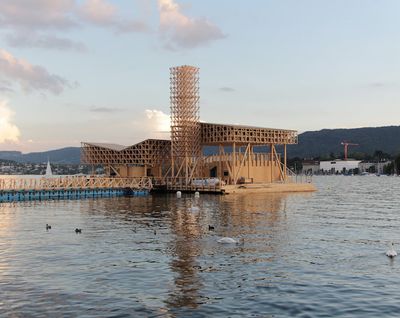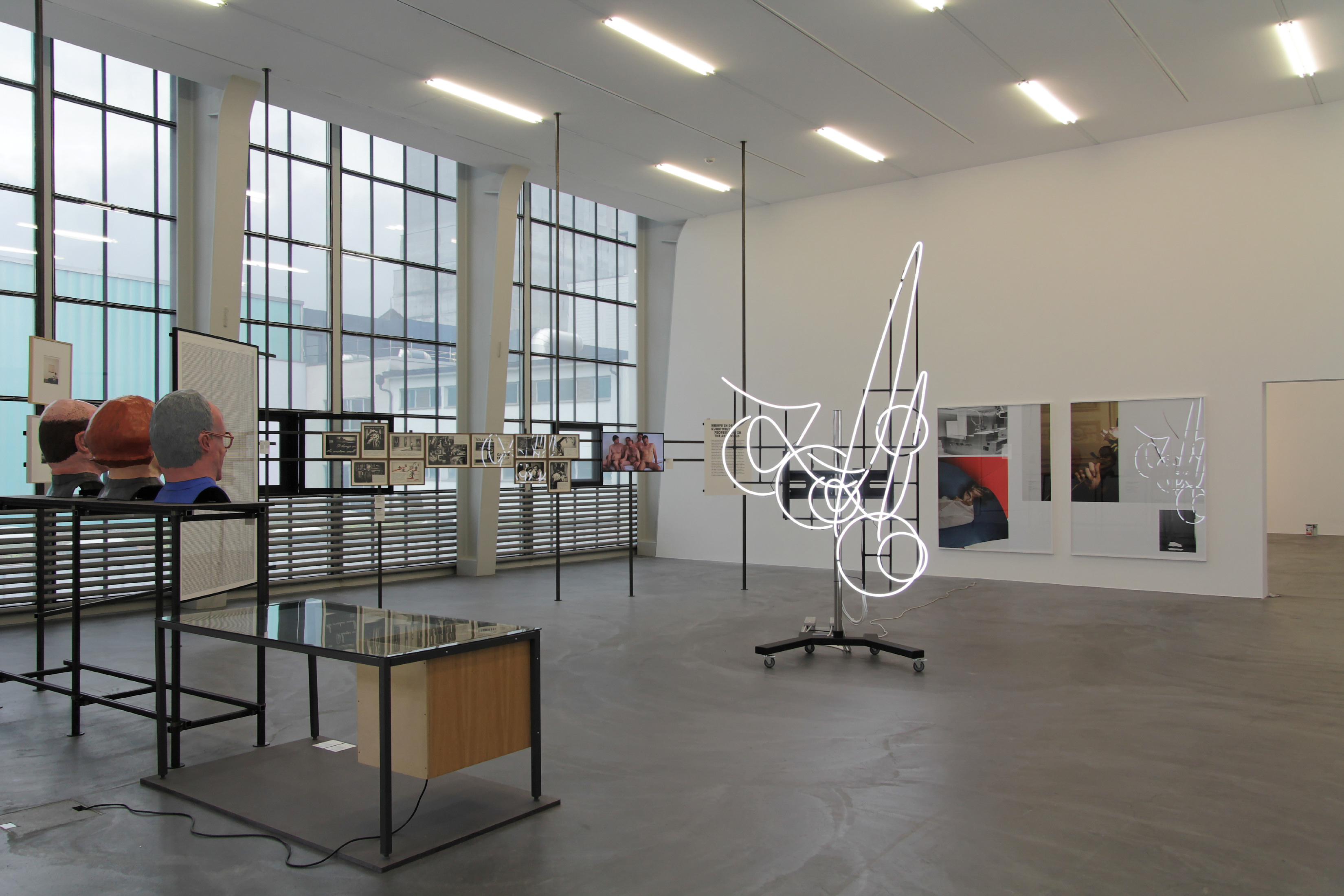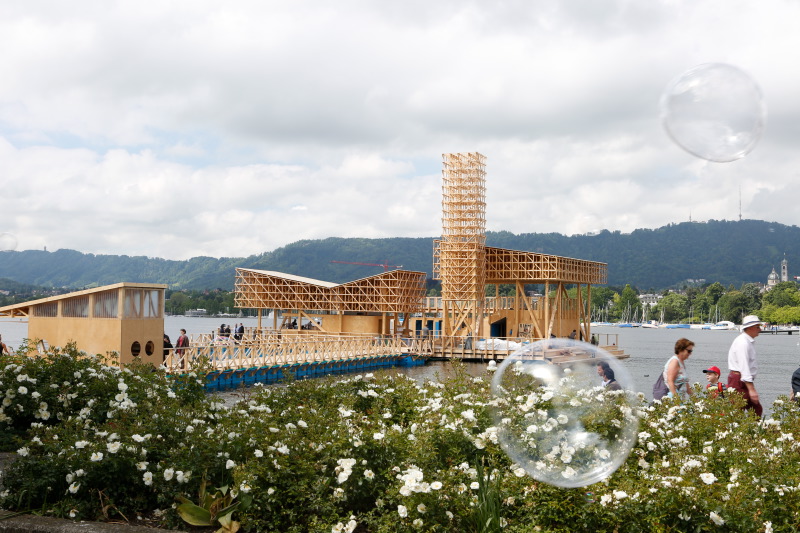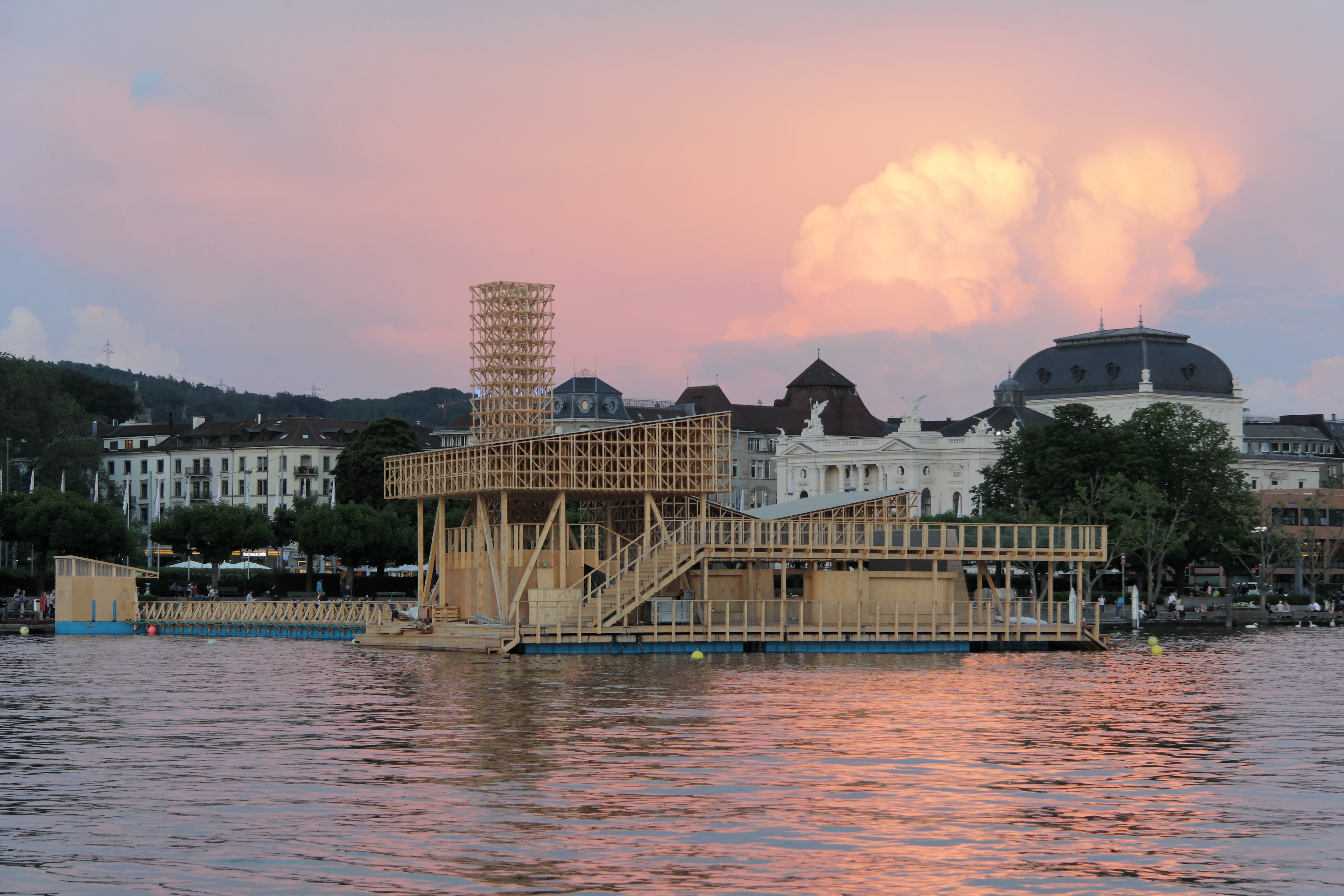'WORK': A Report from Manifesta 11

The 11th edition of the roving European biennial Manifesta, staged this year in Zurich on the occasion of the centenary of Dada’s founding in the city, marks the first time an artist has ever curated the exhibition. For Manifesta director Hedwig Fijen, the importance of this appointment could not be understated: in her words, appointing Christian Jankowski as ‘artist-cum-curator’ marks a ‘break with the tendency (or at least a part influenced by recent art theory) of exhibitions which illustrate a theme’. And yet, this biennial does have a theme: work, or, as the title describes it: ‘What People Do For Money’.
Perhaps Fijen was talking more about Manifesta 11’s subtitle, when it came to Manifesta 11’s non-theme: ‘Some Joint Ventures’. This articulates the premise behind the entire show, which is an exploration of work through the pairing of artists with various professionals working in Zurich, from an undertaker to a dog stylist. As Jankowski states, this is what makes this biennial special: some 30 commissions were produced in Zurich, presented for the 100-day exhibition in three different contexts.

The first is a historical exhibition titled The Historical Exhibition: Sites Under Construction, co-curated with Francesca Gavin and presented within two main exhibition venues: The Löwenbräukunst and the Helmhaus, where new commissions were also presented (so as to put them into a historical context, Jankowski explains).
The second context was the presentation of new works within working sites around the city that link to the profession each artist engaged with. Two fantastic examples are John Kessler’s kinetic sculpture inspired by the mechanics of watch design installed in a watchmaker’s workshop, and Margaritte Humeau’s two robot-like creatures, designed by the artist to engage in a mating dance with one another, presented at ETH Zürich, where Humeau’s collaborator, Mathias Bürki, is undertaking a PhD in autonomous systems.
The third context is presented in the Pavilion of Reflections: an impressive platform floating on Lake Zurich built by Studio Tom Emerson at ETH Zürich—by far one of the best things of the entire show. The Pavilion is described as an open-air bar and screening area, in which visitors can watch a series of films documenting the process behind producing the works for Manifesta. These films follow artists and workers as they come together in an encounter that feels promising enough; they were made by the students of the Zürcher Hochschule der Künste under guidelines created by Jankowski and approved by Jean Luc Godard himself. In one, we see Mike Bouchet discussing the 80,000 kilos of human waste that constitutes a day’s intake at the Werdhozli Wastewater Treatment Plant, which he turned into an installation of dried, sludgy blocks presented at the top level of the Löwenbräukunst in a room thick with a fragrance designed to mask the real odour of a sculpture Bouchet conceives as one made by anyone who took a shit in Zurich on 24 March 2016. (Visiting one week after the opening, the perfume appeared to be failing.)

Also presented at the Löwenbräukunst is an exhibition that opens with a scene from Russian director Andrei Tarkovsky’s 1972 film Solaris, that Jankowksi describes as an overture to Manifesta 11 as a whole. In it, an encounter between an astronaut and an alien in a room featuring paintings by Peter Brueghel the Elder reflects the framing of two weightless souls caught between two conceptual frames—history (the room and its décor) and technology (the spaceship). The curator finds echoes in the scene, he states, ‘in the meetings between professionals and artists in Zurich for Manifesta: old and new professions encounter the unknown—the production of art’. This sets the tone for the historical section of the show, which presents works and documents from the past 50 years, arranged on a continuous train of iron scaffolding that presents a ‘non-linear’ timeline reflecting on how work has been perceived and represented.
The problem with this frame, however, is that it remains unclear as to whether art is seen as a profession in this exhibition or not, since the question of artist labour has been supplanted with a kind of fetishised pairing between ‘non-artists’ and ‘artists’ that feels at best literal, and at worst, stereotypical, which is a shame for the artists included. Take the placement of a few of Andrea Éva Győri’s studies of women masturbating installed in a high-end lingerie store as part of the satellite exhibitions in professional spaces. And the entire historical exhibition at Löwenbräukunst, where the theme of work is taken so simplistically and presented so repetitively, that the exhibition begins to feel like an object rendition of Rihanna’s ‘Work’ covered by Justin Bieber.

In one room, which purports to explore the notion of free time (which Jankowski seems to correlate with cigarettes and swimming pools), we see Duane Hanson’s 1989 Lunch Break installation from the ‘Sculptures of Life’ series, which depicts—in this framing—an overwhelmingly stereotypical view of construction workers, complete with pizza box, dejected gaze, vest, and white-trash trucker cap. (This was followed by, among other worker’s pieces, a series of 400-Euros Jobs portraits by Angela Vanini, alongside, of all things, a Gursky.) It has to be said: this superficial treatment of a theme as loaded as ‘work’ has done no favours for the artists who have been included in—or co-opted into—Jankowski’s curatorial vision, given the quality of each individual piece. These include portraits of the female employees of the Moscow Metro from the On Duty series (2007) by Olga Chernysheva, video documentation of Momoyo Torimitsu’s 1999 performance Business in London, and Harun Farocki’s Workers Leaving the Factory (1995).
That the Löwenbräukunst exhibition is situated in a building that houses a few blue chip galleries such as Hauser & Wirth and Galerie Eva Presenhuber, adds more insult to injury, given that the curator does not acknowledge that the biennial is essentially adding value to these spaces and their shows, nor does this confluence offer any original insight into the nature of the art market system (and our implication within it). Indeed, on the same floor in which Torbjørn Rødland is showing as part of the biennial, Eva Presenhuber has staged a solo show of the artist’s work. Such blatant opportunism points to a certain lack of curatorial responsibility, despite the counterargument that this reflects the art world’s work—the kind that would allow an artist as excellent as Aslı Çavuşoğlu to present a series of found paintings depicting Swiss mountainscapes in a line, even if Hans-Peter Feldman has already exhausted the trope, and despite the work that Çavuşoğlu undertook with picture restorer Nicolas Boissonnas to alter each picture’s surface. (In this case, however, the installation of single paintings in the information office at the central Zurich train station was a successful intervention.)

It is a pity that such an interesting curatorial concept fell flat, given the promise the theme expressed upon the announcement. What does it truly mean to work today? How does this correspond to the position of artists as workers, and what does this position say about work in general? In many ways, Jankowski answers the question in his pairing of artist Georgia Sagri with a banker at the private bank Julius Bär, which owns one of the largest corporate collections of Swiss contemporary art in Switzerland. The performance is only visible on 5 days throughout June and July, making it hard for visitors to catch it. (I was unable to see it on both my trips to Zurich.) Of course, this speaks to the split in Jankowski’s biennial, directed more—as he states—for the public of Zurich, who should be able to visit Sagri’s intervention. rather than the art world’s roving army of precarious labourers who have been largely ignored, even if they are the ones who actually put in the work to visit exhibitions like these.
But even the ‘public’ Jankowski purports to serve—the people of Zurich—have been somewhat swindled. (Though the question of what the ‘public’ is to both Jankowski and Manifesta is up for debate, since the term is used loosely.) The question of how Manifesta 11 views work is further elaborated in the very fact that the regular supervisory staff of the Kunsthalle Zürich, located within the Löwenbräukunst complex—known to be mostly students and artists—have been replaced (or rather, asked to take unpaid leave) for the 100 day exhibition by volunteers. (Reportedly, the exhibition blew most of the city of Zurich’s cultural budget.) The result is an exhibition that reeks of woefully misguided idealism, in which work becomes ‘work’. —[O]











































































































































































